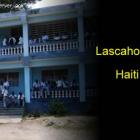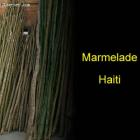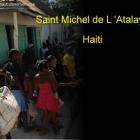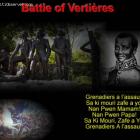ADVERTISEMENT
Who in Haiti remember Spanish word for parsley: perejil, with its "r"
The massacre of Moca and Santiago at the hands of Haitian troops
The massacre of Dominicans committed by Haitian troops under command of Jean Jacques Dessalines and Henri Cristophe.
In 1804 two Haitian armies invaded the eastern part of the island at the time, the southern army comanded by Dessalines, and the norhern army commanded by Cristophe, both met at the city of Santo Domingo, were french troops, and Dominicans barricaded themselves, and held the Haitian troops for several months.
Desalines desided to head back to Haiti, After hearing some rumors that french ships were headed to Port Prince, on his way back to Haiti Desalines killed, and slaved thousands of Dominicans, and burned several towns, and cities.
The place he committed the most horrific atrocities was in the Cibao, he burner the cities of La Vega, Santiago, and Moca, the Cibaenos suffered the worst fate out of all the Dominicans, probably because the majority were pred European, which Dessalines associated with the french who oppressed his people for years.
It is estimated that 25,000 Dominicans were executed at the hands of Haitian troops, this an frighning number considering that the Dominican population of the time didn't reached 80,000 souls.
Today, there is a huge controversy about a University donated by Dominican republic to Haiti, which was named after the criminal Jean Jaques Desalines.
In the dramatic story "Memories of my departure from the island of Santo Domingo on April 28, 1805," the Dominican jurist Gaspar de Arredondo and Pichardo, it is revealed that forty (40) children were slaughtered in the church of Moca, and the bodies were found in the sanctuary, which is the space surrounding the altar of the church.
This tragedy, unparalleled in the history of the island was part of the genocide that killed thousands of Dominicans, many of them beheaded and decapitated.
This disaster also unprecedented in our history, was executed by the troops of General Henri Christophe of Haiti (Henry Christopher), who had his orders and led the hosts of Jean Jacques Dessalines who leave the Spanish side of the island during his abortive invasion of that bloody year of 1805.
Interested in this commentary highlight in particular the tragedy involving children brutally slaughtered Dominicans or kidnapped, imprisoned and driven on foot to Haiti.
The massacre of 40 children in Moca is documented in the story of Gaspar de Arredondo and Pichardo1.
In the work that is inserted into this same issue Alejandro Filled includes this paragraph in addition to terrifying and inexplicable is a very creepy episode:
My great grandmother to this day still tells me stories of how her friend's grandmother escape the massacre by faking her death at one of the churches, and many other stories of this massacre.
So this atrocity is ingrained in the minds of Dominicans, especially of Cibaenos, who were the ones who suffered the worst fate. I think this was the start of the grudge between these two Nations, prior to 1804 there was never an act of aggregation between both groups.
Some even speculated that Trujillo's decision to kill thousands of Haitians in 1937 was in part due to him being enraged by the stories of this massacre on Dominican territory.
Related Article:
Who in Haiti remember Spanish word for parsley: perejil, with its "r"
Who is likely to forget this hard-learned lesson centered around the word 'parsley' and what it meant to be Haitian across the border in the...
Our objective is to share with you news and information about Haiti and the people of Haiti. Traditions, habits and the way we were or grew are alive in this site. We highly recommend that you Subscribe to our Newsletter and also share with us some of the things that are memorable and made us unique people.


 Life After Death
Life After Death  Lascahobas, Haiti
Lascahobas, Haiti  Marmelade, Haiti
Marmelade, Haiti  Saint Michel de L 'Atalaye
Saint Michel de L 'Atalaye  Battle of Vertieres
Battle of Vertieres